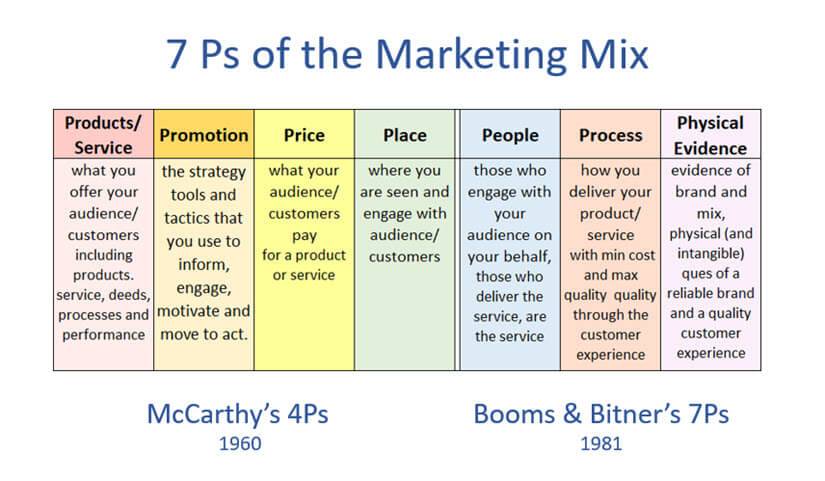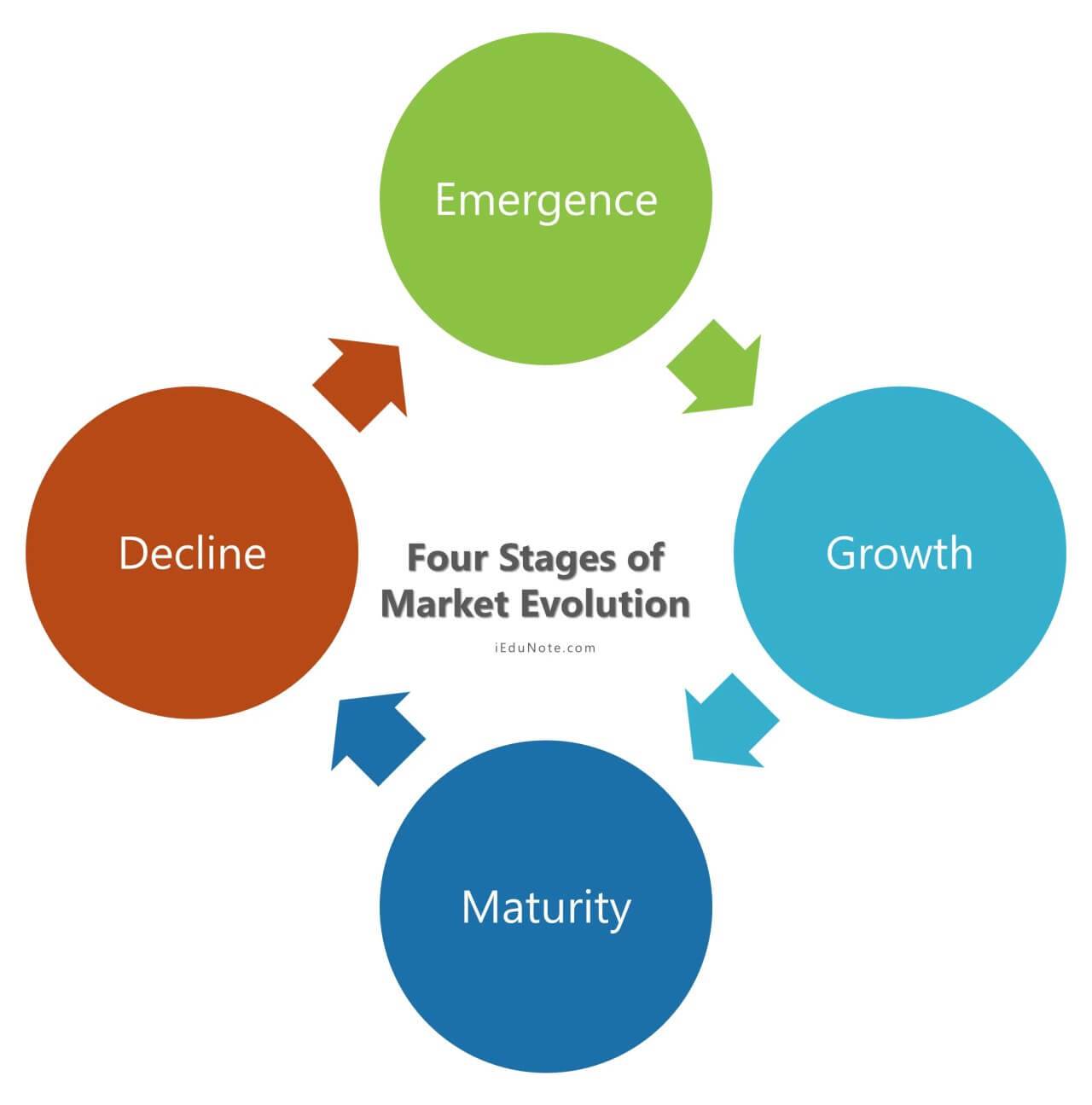Modern marketing is a language all on its own, with countless acronyms, buzzwords, and industry-specific jargon. Understanding these terms is crucial for any marketer who wants to stay ahead of the curve and create successful campaigns. In this blog post, we have compiled 100 important marketing terms that you need to know to be an effective marketer in today’s ever-evolving landscape.
From SEO and PPC to AB testing and ROI, this comprehensive list will ensure that you’re up-to-date on the latest marketing lingo. So, let’s jump in and explore the key terms that every modern marketer should know!
Introduction to Modern Marketing
1. Introduction to Modern Marketing: A Guide to Marketing Terminology
Marketing has evolved significantly over the years, and the emergence of digital platforms has brought new dimensions to the field. In this article, we will introduce you to modern marketing and familiarize you with the most important terminology in the field.
2. Five Concepts of Marketing Policies: Understanding the Strategies
The five concepts of marketing policies lay the foundation of modern marketing. They are production, product, selling, marketing, and societal marketing concepts. Knowing how these policies work is crucial to the success of any marketing strategy.
3. Addressing the Customer Directly: The Power of Personalization
Addressing the customer directly is an essential aspect of modern marketing. Personalization in marketing, social media marketing, and SEO helps businesses enhance their customer satisfaction and loyalty. Knowing how to communicate directly with customers is key to improving your business’s bottom line.
4. Importance of Word-of-Mouth Marketing: Harnessing the Power of Referrals
Word-of-mouth marketing is still one of the most powerful tools in modern marketing. It helps build trust and credibility, which can ultimately translate into conversions. Learning how to leverage positive reviews and referrals can open up a whole new level of growth for your business.
5. Internal Marketing Strategies: Treating Your Employees as Customers
Internal marketing, also known as inbound marketing, involves marketing and promoting a company’s products and services to its employees. This can create a positive work environment and improve employee satisfaction and retention rates. Treating your employees as customers can ultimately help your business grow in the long run.
6. Inbound Marketing vs Online Marketing: Which One is Right for You?
Inbound marketing and online marketing are two essential strategies for modern marketing. While inbound marketing focuses on bringing potential customers to your business, online marketing emphasizes paid advertising and search engine optimization. Understanding these two strategies’ differences can help you choose the one that best suits your business needs.
7. Marketing Mix Elements and Their Importance: Balancing the 4P’s
The four P’s of marketing, product, price, place, and promotion, define the essential elements of a successful marketing mix. Balancing these elements depends on your target audience, budget, and overall business strategy. Understanding the importance of these elements helps businesses create a cohesive and successful marketing campaign.
8. Three Stages of Marketing Concept: Evolution of Modern Marketing
Marketing has gone through three primary stages: production-oriented, sales-oriented, and customer-oriented. The customer-oriented stage, also known as the marketing concept, is the foundation of modern marketing. Embracing this concept can help businesses better understand their customers and translate that understanding into more conversions.
9. Email Marketing and Its Advantages: Staying Connected With Your Customers
Email marketing remains an important aspect of modern marketing. It helps businesses stay connected with their customers and inform them about promotions, new products, and other relevant information. Knowing how to craft compelling email campaigns can help businesses enhance their customer engagement and loyalty.
10. Importance of Factual Data in Modern Marketing: Making Informed Decisions
Factual data is crucial in modern marketing. It helps businesses make informed decisions about their target audience, campaign strategies, and overall business growth. Factual data can be gathered through various means, including customer surveys, web analytics, and social media listening. Understanding the value of factual data can help businesses create more effective marketing campaigns.
Five Concepts of Marketing Policies: Bringing it All Together
After discussing the basics of modern marketing and the importance of understanding customers and their needs, it’s time to delve into the five concepts of marketing policies. These concepts are essential for any marketing plan to succeed, and they work together to ensure your brand is properly promoted.
11. Production Concept: This concept focuses on manufacturing and efficiently producing products at a low cost. It assumes that consumers are primarily interested in purchasing affordable and widely available products.
12. Product Concept: This approach assumes that consumers will favor products that offer the highest quality, performance, and features. Brands utilizing this concept focus on the technical aspects of their products and how they can differentiate themselves in the market through innovation and superior design.
13. Selling Concept: The selling concept aims to promote a brand or product through aggressive selling and advertising tactics rather than relying solely on the product’s benefits. It assumes consumers may need to realize they need a product or may not be actively searching for it, and therefore need to be convinced to buy.
14. Marketing Concept: This approach prioritizes understanding the needs and wants of the target market and adapting the product and its promotion accordingly. The marketing concept strategy involves market research, developing a unique customer value proposition, and building long-term relationships with customers.
15. Social Marketing Concept: This newer concept focuses on promoting ideas or products that have a social or environmental benefit rather than just satisfying consumer needs. Brands adopting this approach aim to make a difference in society while fulfilling a need or want, resulting in both brand and social value.
All five above concepts are important to understand as they work together to form the foundation for any successful marketing strategy. These concepts can increase brand awareness, loyalty, and sales by properly targeting customers, utilizing inbound marketing, and building a strong marketing mix.
By understanding and implementing these strategies, any modern marketer can create a successful marketing campaign that resonates with customers and drives them to take action.
Addressing the Customer Directly
Addressing the customer directly is the key to modern marketing success. It’s all about making the customer feel seen and heard throughout their entire experience with your brand. Here are some tips on how to address your customers directly:
16. Personalization: Personalization is crucial for addressing the customer directly. By tailoring your messages and campaigns to specific customer segments, you can make sure that each customer feels like you’re speaking directly to them.
17. Customization: Customization is another great tool for addressing the customer directly. By allowing customers to personalize their experiences with your brand, you can create a deeper sense of engagement and loyalty.
18. Customer Feedback: Gathering customer feedback is essential for addressing the customer directly. You can use this feedback to improve your products, services, and overall customer experience. Plus, it shows your customers that you listen to and care about their opinions.
You can build stronger relationships, improve customer loyalty, and drive revenue growth by addressing your customers directly. So, prioritize the customer experience and use these tips to ensure that you’re addressing your customers directly at every touchpoint.
Importance of Word-of-Mouth Marketing
The Importance of Word-of-Mouth Marketing in Modern Marketing
Word-of-mouth marketing has been around for centuries and continues to be one of the most effective ways to market products and services in modern times. In this blog section, we will explore the importance of word-of-mouth marketing in modern marketing and how it relates to the other important areas we have discussed in this blog.
19. Addressing the Customer Directly
In today’s world, customers are bombarded with advertisements constantly. They have become experts at tuning out the noise and focusing on what matters to them. Word-of-mouth marketing helps businesses to cut through the noise and speak directly to their customers by leveraging the relationships of people in their network. When a customer recommends a product or service to someone they know, the recommendation is seen as genuine and trustworthy, which increases the likelihood of a purchase.
20. Internal Marketing Strategies
Word-of-mouth marketing is not just about customers recommending products to their friends and family. It also involves employees recommending products to customers. A happy and engaged workforce can become brand ambassadors and use their personal experiences to promote products and services. This internal marketing strategy has become increasingly important as customers seek authentic experiences and interactions with companies.
21. Marketing Mix Elements and Their Importance
The marketing mix is a combination of product, price, place, and promotion. Word-of-mouth marketing can touch on all these elements. If a customer shares a positive experience with a product, it can increase the chances of a purchase. Price also plays a role in word-of-mouth marketing, as customers are more likely to recommend products that they perceive as providing good value for money. Word-of-mouth marketing can impact a place if a customer shares a positive experience about a specific location or service. Finally, promotion is one of the most obvious areas where word-of-mouth marketing can have an impact.
22. Email Marketing and Its Advantages
Email marketing is an important component of modern marketing, and word-of-mouth marketing can play a significant role in its success. By including referral programs in email campaigns, businesses can incentivize customers to share their positive experiences with their network. This can lead to increased conversions and higher ROI for campaigns.
In conclusion, word-of-mouth marketing is a tried and tested method of marketing that has stood the test of time. It is an important component of modern marketing and can be easily integrated into a business’s marketing strategy. By focusing on addressing the customer directly, developing internal marketing strategies, utilizing the marketing mix elements, and leveraging email marketing, businesses can increase their chances of success through word-of-mouth marketing.
Internal Marketing Strategies
Internal Marketing Strategies are an integral part of modern marketing policies. With the evolution of technology and market trends, businesses must prioritize internal marketing to attain success. Here are five internal marketing strategies companies can implement and other marketing concepts to drive results.
23. Collaborate with employees for better customer service: As part of internal marketing, businesses should work with employees to improve customer service. Encourage employees to provide feedback on customer interactions and implement their suggestions to enhance experiences.
24. Invest in employee training: Well-trained employees can create satisfied customers. Investing in employee training programs can equip them with the necessary tools and knowledge to serve customers better.
25. Reward employee performance: Recognizing and rewarding employee performance is an excellent internal marketing strategy. It helps build job satisfaction, and motivated employees often deliver better results. Rewards can be in the form of extra pay, promotions, or other incentives that employees value.
26. Promote company culture: A positive company culture can attract and retain talented employees. Internal marketing can build a strong company culture by encouraging teamwork, communication, and recognition. Companies can also organize team-building activities to foster a positive work environment.
27. Implement employee feedback mechanisms: Employee feedback mechanisms enable businesses to gather insights on their internal marketing efforts. Implementing feedback mechanisms, such as surveys or suggestion boxes, can help identify areas for improvement and encourage employees to participate in the company’s success.
In conclusion, internal marketing is a critical aspect of modern marketing that helps businesses to attract and retain customers. Implementing internal marketing strategies, such as collaboration with employees, investing in employee training, rewarding employee performance, promoting company culture, and implementing employee feedback mechanisms, can lead to better results and a more successful business.
Inbound Marketing vs Online Marketing
Inbound Marketing vs Online Marketing: What’s the Difference?
In today’s world of digital marketing, there are a lot of terms floating around that can confuse marketers. Two of the most common are inbound and online marketing, often used interchangeably. However, they are not the same thing. Here’s a breakdown of the difference between the two:
28. Philosophy: Inbound marketing is a philosophy that focuses on drawing in customers by creating valuable content that is tailored to their needs and interests. Online marketing is a broad term that covers any type of marketing that is done online, regardless of the approach or philosophy behind it.
29. Tactics: Inbound marketing is a specific methodology that relies on tactics such as content marketing, SEO, social media, and email marketing to attract and engage customers. Online marketing can include any of these tactics but can also encompass other approaches such as display advertising or affiliate marketing.
30. Audience: Inbound marketing is typically aimed at a specific target audience that is actively seeking out information or solutions related to a particular product or service. Online marketing can be targeted at any audience, regardless of whether they are actively searching for information or not.
31. Engagement: Inbound marketing is all about engaging with customers meaningfully, building trust and credibility over time. Online marketing can be more transactional, with a focus on making quick sales or driving traffic to a website.
32. Data: Inbound marketing relies heavily on data and analytics to measure the success of campaigns and improve results over time. Online marketing can also benefit from data and analytics, but it may only sometimes be as focused on this aspect of marketing.
33. Results: Inbound marketing is generally considered to be a more effective and sustainable approach to marketing than online marketing. This is because it focuses on building relationships with customers over time, which can lead to greater loyalty, trust, and repeat business.
Overall, while inbound marketing and online marketing share some similarities, they are distinct approaches with different philosophies and tactics. Marketers should choose the approach that best aligns with their business goals and target audience and be sure to track and measure results to continuously improve their marketing efforts.

Marketing Mix Elements and Their Importance
The marketing mix is a crucial aspect of modern marketing. It is made up of four basic elements- product, price, promotion, and place. Knowing how to effectively incorporate these elements into your marketing strategy is key to success. Here are a few reasons why:
34. Product: Your product is the heart of your business. It is what your customers are buying, so it’s important to have a product that meets their needs and wants.
35. Price: Pricing is one of the most important elements of the marketing mix. A poorly priced product can lead to a decrease in sales and, ultimately, loss of business. It’s important to price your product correctly, taking into account the competition, target market, and product value.
36. Promotion: Promotion is how you communicate your product to your customers. Using the promotion to create demand and develop lifelong customers is important.
37. Place: The location where your product is sold is also very important. You need to ensure that it is easily accessible to your customers and is in a location that is convenient for them.
The marketing mix elements work together to create a successful marketing strategy. By understanding their importance, businesses can achieve success in their marketing efforts.
Combining these elements can help businesses address the customer directly, take advantage of word-of-mouth marketing, and create internal marketing strategies. By utilizing inbound marketing vs online marketing, businesses can develop a strong online presence and take advantage of email marketing to engage their audience.
It’s important to note that factual data is a key component in modern marketing. By studying the marketing environment and consumer behavior, businesses can obtain valuable information that can guide their marketing decisions.
As modern marketing evolves, staying up-to-date on the latest concepts and terms is important. By understanding the marketing mix elements and their importance, businesses can develop strong marketing strategies that will ultimately lead to success.

Three Stages of Marketing Concept
Three Stages of Marketing Concept
Building a solid marketing strategy is essential for businesses that aspire to succeed. One way to attain this is by following the three stages of the marketing concept. Let’s take a closer look:
38. Product Orientation
The first stage of the marketing concept is centered around the product itself. Companies focus on ensuring that their products are of high quality and meet customer expectations. They also innovate their products to address changing consumer needs.
39. Sales Orientation
The second stage of the marketing concept involves companies being more proactive in promoting their products. The focus is no longer solely on producing quality products. Companies now want to encourage customers to buy their products over the competition. At this stage, salespeople often use persuasive tactics to convince customers to purchase from them.
40. Customer Orientation
The final stage of the marketing concept is when companies start prioritizing their customers’ needs and want. Instead of just trying to sell their products, companies aim to understand their customers’ wants and concerns. By adopting this approach, companies are better positioned to provide value to their customers and build strong relationships.
Connecting with the customer is the foundation for the three stages of the marketing concept. The importance of addressing customers directly (Section 3) and utilizing inbound marketing VS online marketing (Section 6) cannot be understated. Businesses can gain word-of-mouth marketing by effectively connecting with customers (Section 4). Lastly, using factual data (Section 10) can help businesses better understand customer needs and guide product development.
By implementing these concepts and understanding the three stages of marketing, businesses can gain a competitive edge and develop lasting connections with their customers.
Email Marketing and Its Advantages
Email Marketing and Its Advantages
As a modern marketing strategy, email marketing has significant advantages that make it ideal for reaching customers. Here are some of the key benefits:
41. Cost-Effective Marketing: Email marketing is one of the most cost-effective ways to reach customers. There are no printing or postage costs and no advertising fees. All you need is a good email marketing platform and a targeted email list to start.
42. Targeted Messaging: With email marketing, companies can send messages to specific audiences based on demographics, behavior or previous interactions with their brand. This precision targeting ensures that the user receives the right message at the right time.
43. Automation Capabilities: Email marketing automation allows companies to set up triggered emails based on subscriber activity, such as a welcome email when someone signs up or an abandoned cart email when someone leaves items in their cart but doesn’t complete the purchase.
44. Builds Relationships: Email marketing is a great way to build relationships with customers. Companies can provide valuable content, exclusive offers, and personalized recommendations to keep subscribers engaged and interested in their brand.
45. Measurable Results: Email marketing provides in-depth analytics that allows companies to track their email campaigns’ performance. This information enables them to optimize the messaging and improve results over time.
46. Easy to Share: Email marketing is easy to forward, making it easy for subscribers to share content with their friends and family. This sharing feature can help increase brand awareness and attract new customers.
47. Mobile-Optimized: With mobile devices accounting for a significant portion of email opens, it’s critical that companies ensure their emails are mobile-responsive. Emails that are optimized for mobile devices can lead to higher engagement and conversions.
48. High ROI: Email marketing has one of the highest returns on investment (ROIs) of any digital marketing strategy. In fact, for every $1 spent on email marketing, the average ROI is $42.
49. Builds Brand Loyalty: By providing subscribers with relevant, personalized content, email marketing can help build brand loyalty. This loyalty can lead to increased sales and referrals as customers become advocates for a brand they love.
In conclusion, email marketing is a powerful tool that offers numerous benefits for companies looking to reach their target audience. By incorporating email marketing into their overall marketing strategy, companies can increase brand awareness, build relationships with customers, and ultimately drive sales and revenue.
Importance of Factual Data in Modern Marketing
Importance of Factual Data in Modern Marketing
In today’s fast-paced world, data plays a crucial role in business decision-making, and the same holds true for modern marketing. Here are some reasons why factual data is essential for modern marketing:
50. Better understanding of target audience: Factual data like customer demographics, interests, behavior, and buying patterns provides marketers with insights into their target audience. This data helps them create targeted campaigns that resonate with their audience and increase the chances of conversion.
51. Improve customer experience: By collecting and analyzing customer feedback and data, marketers can identify and address pain points during the customer journey. This helps in improving the overall customer experience and reduces the churn rate.
52. Accurate ROI measurement: Factual data helps marketers measure the effectiveness of their marketing campaigns and allocate resources accordingly. It enables them to track ROI accurately and justify their marketing budget to higher-ups.
53. Predictive analytics: Modern marketing relies heavily on predictive analytics. Marketers use historical data to predict future trends, customer behavior, and market shifts. This helps them stay ahead of the competition and make informed decisions in real time.
54. Personalization: Personalization is a critical aspect of modern marketing. Factual data helps marketers create personalized campaigns that resonate with their audience. By collecting and analyzing customer data, marketers can understand their preferences and buying behavior and tailor their campaigns according to their interests.
55. Optimization: Marketers use data to optimize their campaigns and make them more efficient. They use A/B testing, heat mapping, and other techniques to optimize website design, messaging, and other elements. This helps in increasing conversions and reducing bounce rates.
56. Attribution modeling: Factual data helps marketers attribute conversion and revenue to the right marketing channel or campaign. This helps them identify the marketing channel that provides the maximum ROI and allocate resources accordingly.
57. Competitive analysis: Factual data can be used to analyze and stay ahead of the competition. By analyzing competitor data, marketers can identify gaps in the market and create campaigns that target those gaps.
58. Risk mitigation: Modern marketing is filled with risks, and factual data helps marketers mitigate those risks by making informed decisions. Marketers can identify potential roadblocks by analyzing data and taking steps to avoid them.
59. Real-time decision-making: Factual data helps marketers make real-time decisions. Marketers can make informed decisions that impact the campaign’s success by collecting and analyzing data. This helps marketers stay agile and adapt to changing market conditions.
In conclusion, modern marketing heavily relies on factual data to make informed decisions, improve customer experience, optimize campaigns, and measure ROI accurately. By leveraging data, marketers can create targeted campaigns, stay ahead of the competition, and drive business growth.



